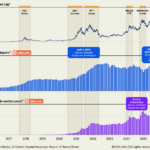By Liz Capo McCormick
Nov. 28 (Bloomberg) -- The rate to exchange floating for fixed interest payments for 10 years may drop below yields on similar maturity Treasury notes for the first time as the Federal Reserve buys mortgages to unfreeze credit markets.
The 10-year swap spread may turn negative as the purchases push mortgage rates lower, triggering a surge in demand to lock in fixed rates. Lower mortgage rates tend to increase consumers refinancing levels, causing a decline in bondholders’ duration, a measure of price sensitivity to interest-rate change expressed as a number of years.
The 10-year spread dropped as low as seven basis points after the Fed announced its plan to buy as much as $600 billion in mortgages on Nov. 25. The 30-year swap spread, which turned negative last month for the first time, is minus 42.50 basis points.
The byproduct of the central bank’s program will create a “need to synthetically extend duration by receiving fixed on longer dated swaps,” wrote Fidelio Tata, head of derivatives strategy at RBS Greenwich Capital in Greenwich, Connecticut, in a note on Nov. 25. “This will create significant swap spread tightening pressure. Some market participants now even see the potential for 10-year swap spreads to follow 30-year spreads into negative territory.”
Swap rates have traditionally been higher than Treasury yields in part because the floating payments are based on interest rates that contain credit risk, such as the London interbank offered rate, or Libor.
Friday, November 28, 2008
Subscribe to:
Post Comments (Atom)



No comments:
Post a Comment